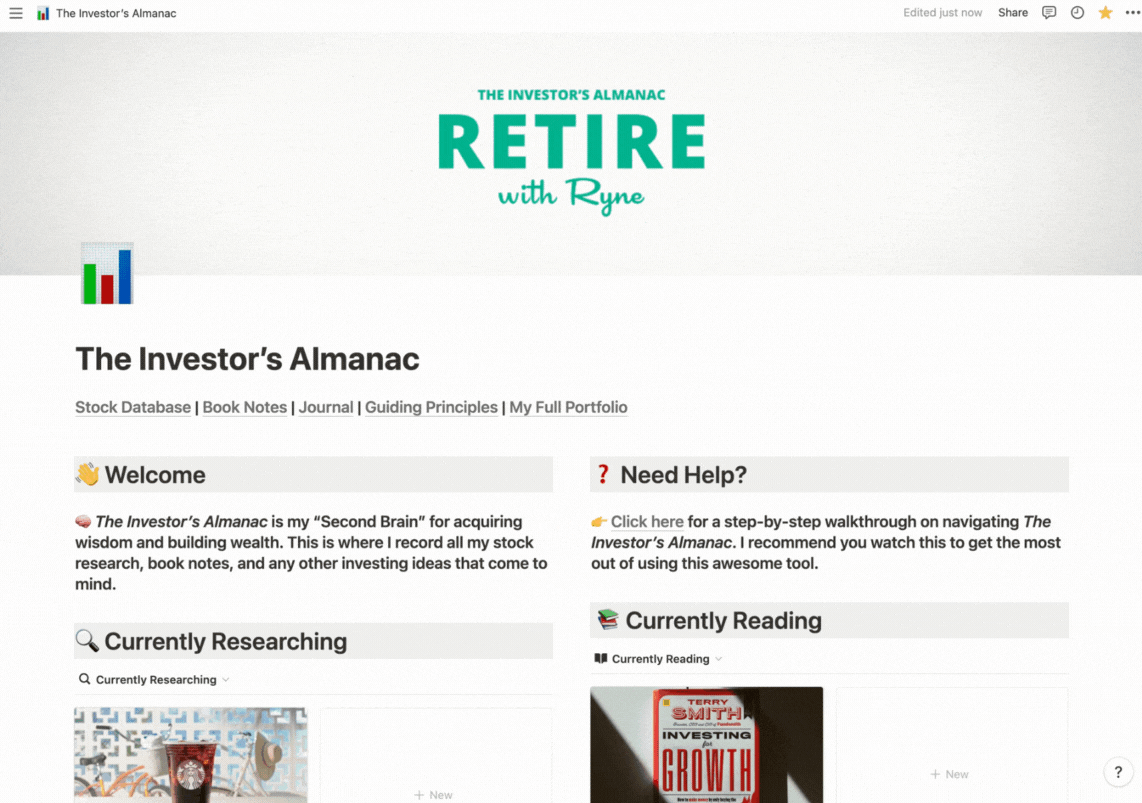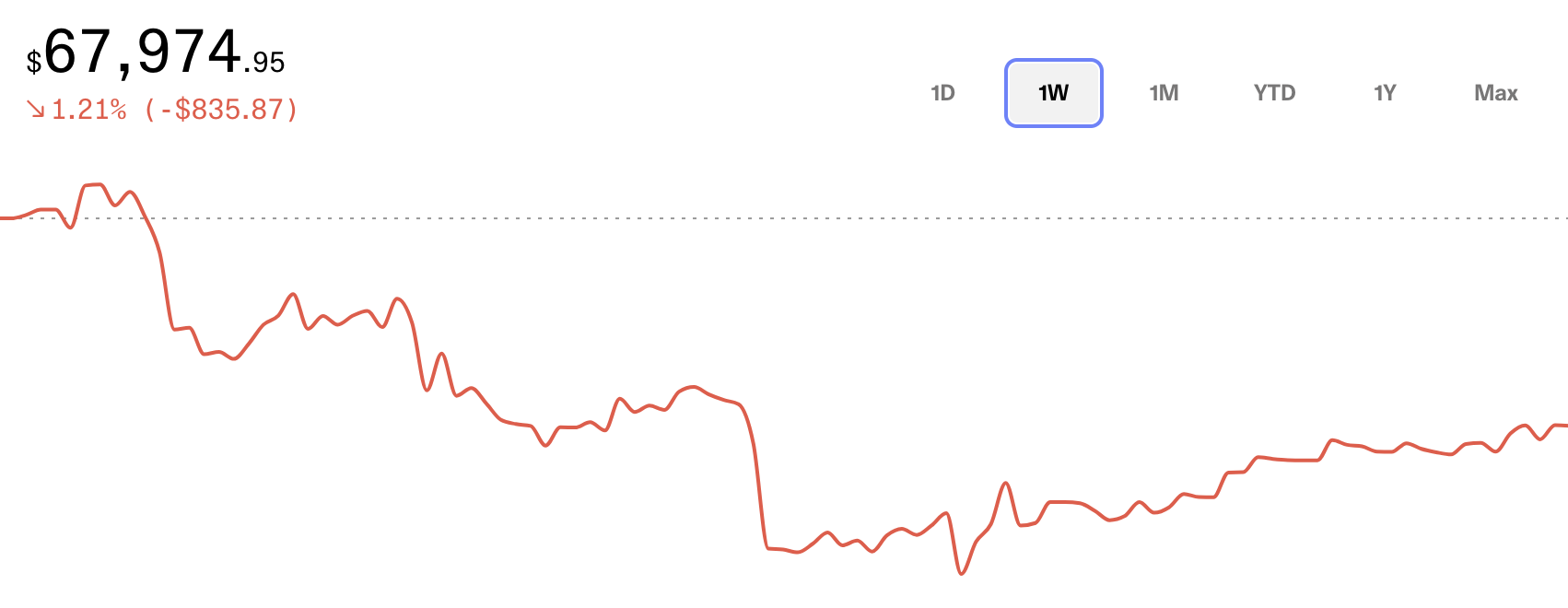My Biggest Struggle As An Investor
Disclaimer: This page contains some affiliate links that might just lead you to the promised land of awesomeness (or at least some cool products). I personally use all of the products promoted, and recommend them because they are companies I have found to be helpful and trustworthy. I may receive commissions for purchases made through links in this post.
When I started investing, I was a blank slate.
I was practically starting from scratch, so I had no idea what to look for when researching companies, which came as a detriment to both my portfolio and my confidence as an investor.
Without a process to follow, or any real sense of direction, I was relying on secondhand opinions to serve as the basis for my investment decisions. In other words, I was choosing to invest in companies based solely on what I saw in videos, articles, and the like, which is certainly not conducive for long-term success in investing.
The companies you choose to invest in should come as a result of your own independent thought, and in my case, this was lacking.
This is not to say that you should completely ignore the insights of others and not learn from more experienced investors, but blindly following the herd will lead to a lack of control over your portfolio and your financial future. You don’t want that.
Understanding this, I realized that my biggest struggle as an investor came from not having a concrete process for researching stocks. I wasn’t thinking for myself, and I didn’t have the tools I needed to think for myself.
If I was going to be an owner of individual companies, I needed to come up with a better process than just watching videos, reading articles, and trying to retain all the information I was taking in.
As you know, there is so much to learn when you research a company. From understanding what the company does to analyzing its competitive advantages, risks, financials, and beyond, it can be quite overwhelming.
To combat that, I created a tool that would not only help me develop a better, more coherent stock research process, but would also serve as a repository for all of my research. I call this tool The Investor’s Almanac, and it’s become what is essentially my “Second Brain” for all things related to investing.
Source: The Investor's Almanac Dashboard
This is what I use to record all of my stock research, log all of my book notes, and flesh out any other investing ideas that come to mind, and it has completely revolutionized my investing process.
For stock research, The Investor’s Almanac has given me a step-by-step research process to follow, and provides a place to compile and organize my notes on a company’s history, financials, competitive advantages, risks, quarterly earnings calls, and more.
For book notes, I use this as a repository for all my readings. It provides a place to log memorable quotes and expand on the key ideas from whatever I’m reading.
Also, for any other one-off investing related thoughts that come to mind, The Investor’s Almanac has a place for that too, and provides an easy-to-use journaling platform for any other writing that I want to do. A lot of what I write in there actually ends up being used here in the newsletter.
With that said, I’ve come to realize that a lot of other investors have the same struggle I did. It turns out that many of us have been missing a method to the madness, and after a lot of requests from those who have seen The Investor’s Almanac, I've turned it into a Notion template for YOU to use as well.
If you're struggling to develop your own stock research process, and are looking for something that will help organize your thoughts and ideas, this is the tool you’ve been looking for. If you’re interested in using The Investor’s Almanac, click here to learn more about the tool and to stay updated on its release.
Now with that said, I want to hear from you: What is your biggest struggle as an investor? Write to me here and let me know.
And a big thank you to all of the readers who responded to last week's newsletter! You can read some of the responses down below in the "Hot Takes" section. 👇
Dividend Investing Democratized
Join thousands of savvy investors in the pursuit of early retirement. Get Retire With Ryne delivered straight to your inbox every week as you build your perpetually growing, cash-flowing dividend stock portfolio.
IN MY PORTFOLIO 📈
Track your portfolio for free with getquin. You can also follow mine there (@ryne) to see all of my purchases, dividends, and other updates in real-time.
ICYMI 🎥
3 EXPENSIVE Dividend Stocks That Are Worth The Price
As Charlie Munger said, it's better to buy great businesses at fair prices than fair businesses at great prices, and in this video, we'll be talking about 3 great businesses that aren't the cheapest, but are certainly worth the price.
CAREFULLY CURATED 🔍
📺 Up In Smoke - Is Altria's dividend safe? It's...complicated. You'll find out why in this video, which evaluates the company's ability to adapt to an eventual smoke-free world.
🎧 A New Perspective On Compounding - Most investors would hope to see their stocks go up, and the quicker the better. But there's an argument to be made for how a stock that goes sideways, or even southbound, can be beneficial to your long-term total return. Counterintuitive, I know.
📚 "Cash Cows" To Buy Now - Investors love "cash cows" because they bring in loads of free cash flow that enable them to sustain (and grow) dividends and share buybacks, and this article covers six of the best "cash cows" to buy right now.
SINCE YOU ASKED 💬
"If we are focusing heavily on dividends are we missing total CAGR?"
- @clarkvk | YouTube
While I am a die-hard dividend investor, I think zeroing in too much on the dividend causes you to lose sight of the bigger picture, and can potentially have you leaving money on the table.
You shouldn't invest in a company strictly because of its dividend yield. We refer to that as "yield chasing," and that's not proven to be a viable long-term strategy.
Instead, your goal as an investor is to own holistically high quality companies that will compound your wealth over the long-term—ideally through both share price appreciation and (growing) dividends. Identifying these holistically high quality companies cannot be accomplished by simply looking at the dividend stats.
Having said that, my personal preference is to only invest in companies that pay a dividend. The dividend isn't everything, but it is imperative to my criteria.
I want to own high quality companies, but I also want them to be dividend payers, which I think is different than chasing yield. There are plenty of high quality companies that pay a dividend, but not all dividend paying companies are high quality investments.
Some are actually "yield traps", and you can learn how to easily identify them here.
Have a question? Ask me here to see it featured in an upcoming newsletter.
HOT TAKES 🔥
Last week, I asked readers how they got into investing. Here are some of the responses:
Robert said: Unfortunately I wasn't lucky enough to learn anything from my parents, money-related things were always taboo. I started to invest, firstly, to protect my money from inflation, secondly, to grow my wealth and possibly to one day live off dividends.
Art said: My dad introduced me to investing. He was a trader/investor (mostly growth stocks). I personally want to focus on dividend producing stocks, and teach my daughters as well.
Nigel said: What got me interested in starting to invest on my own was the moment in 2014 I looked at my first employer 401k mutual fund options and they all included holdings in companies I didn’t believe in. Companies in fossil fuel extraction and tobacco just to name a few. I lost both my grandfathers to smoking related causes before I got to know them so it’s personal to me that I limit how much money I have exposed to companies like that. In my early investment research I found Phil Town, Rule #1 investing and the InvestED podcast and since my investments have been guided by my values, on things I use, know or want to see continue in the world. Phil Town got me to see that my investment dollars are essentially a vote for the world we want and since that connection was made investing got a ton more interesting. My personal investing practice is way more hands on than my parents and most of my friends who prefer to index or use mutual funds, and generally think investing is best left to the professionals. I still have so much to learn but the study and time has all been worth it.
LAST WORD 👋
One of my favorite things about being apart of the investing community is the friends I've made along the way, like my main man Russ Knopf. Russ was visiting Vegas with his family earlier this week, so we were FINALLY able to get together for a real life Dividend Happy Hour. It was a blast!
If you're not already subscribed to Russ's newsletter, I highly recommend you check it out.
Also, I'd love to start doing some more in-person Dividend Happy Hours. If any of you live in Las Vegas and would be interested in something like that, or are ever visiting town, please let me know!






